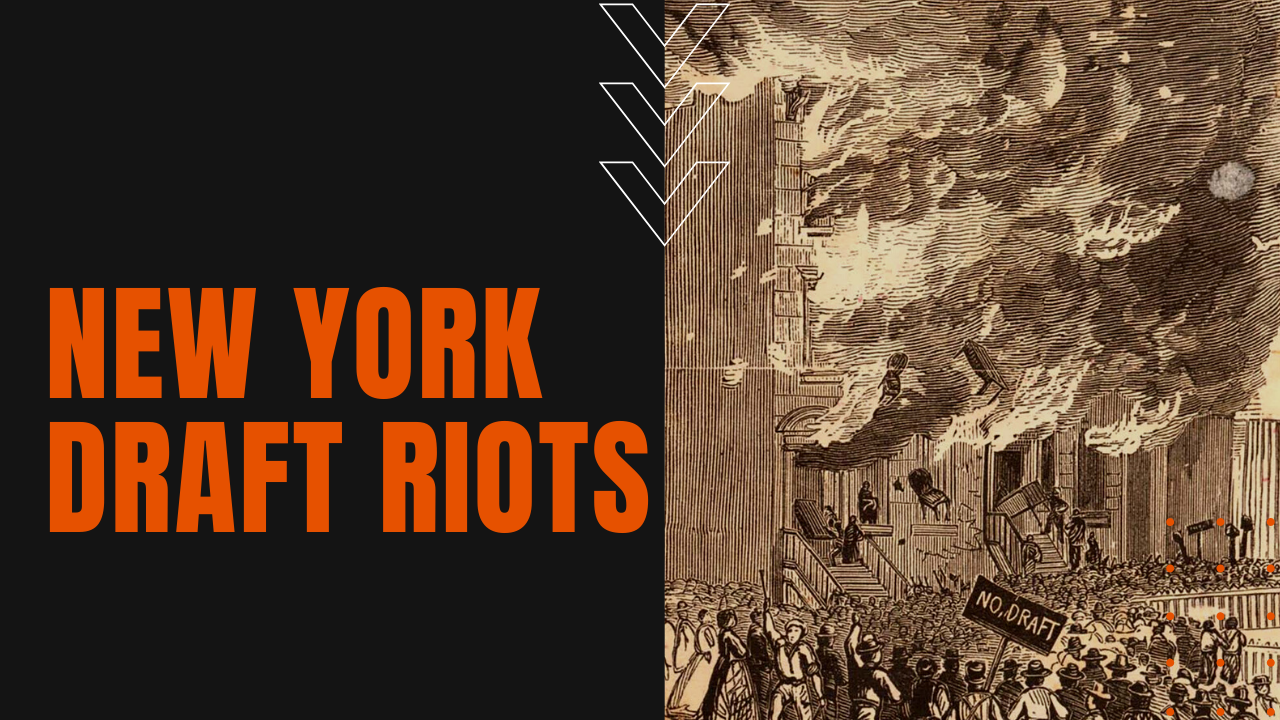New York Draft Riots of 1863

After President Lincoln’s Emancipation Proclamation went into effect on January 1st, 1863, which shifted the emphasis of the Civil War from preserving the Union to the freedom of black Americans, working-class mainly Irish and German men became increasingly concerned that freed blacks would compete for a limited supply of jobs.
To bring tensions to a head, on July 11th, 1863, facing a dire shortage of manpower in the fight against the Confederacy, Lincoln’s government enacted a lottery draft, which allowed wealthy men to avoid conscription by paying a fee of $300, or roughly $6,200 in today’s currency, forcing the onus of military service to fall heavily on poor working-class men.
New York City’s Draft Riots
For the first 24 hours after the draft was enacted, New York City remained suspiciously quiet, until rioting broke out on the morning of July 13th. The eruption of unmitigated violence would quickly morph from a draft-related riot to an all-out race war of unparalleled scope in the history of the United States.
Thousands of white workers attacked military and government buildings, at first becoming increasingly violent only toward people who tried to stop them, including an insufficient number of policemen and soldiers that city leaders mustered to oppose the rioters.
Before militia and volunteer troops could be brought in after the Battle of Gettysburg, angry mobs looted stores and destroyed numerous buildings, including two Protestant churches, the homes of various abolitionists or emancipation sympathizers and an untold number of black-occupied homes.
The Colored Orphan Asylum
In one notorious example, a mob of several thousand people, some armed with clubs and bats, stormed the Colored Orphan Asylum on Fifth Avenue near 42nd Street, a four-story building housing more than 200 children.
They took bedding, food, clothing and other goods and set fire to the orphanage, but stopped short of assaulting the children.
How the New York Draft Riots Ended
By far the worst violence was reserved for African-American men, a number of whom were lynched or beaten to death with shocking brutality. In all, the published death toll of the New York City draft riots was 119 people, though other estimates of the actual number of people killed may have been as high as 1,200 lives.
In addition to the death toll, the riots caused millions of dollars in property damage and made some 3,000 black residents homeless, many of whom fled the city for good.
The New York Draft Riots remain the deadliest in American history, surpassing the 1992 LA Riots and the 1967 Detroit Riots in both lives lost and property destroyed, making the Draft Riots of 1863 one of the darkest episodes in the ongoing story of America.
